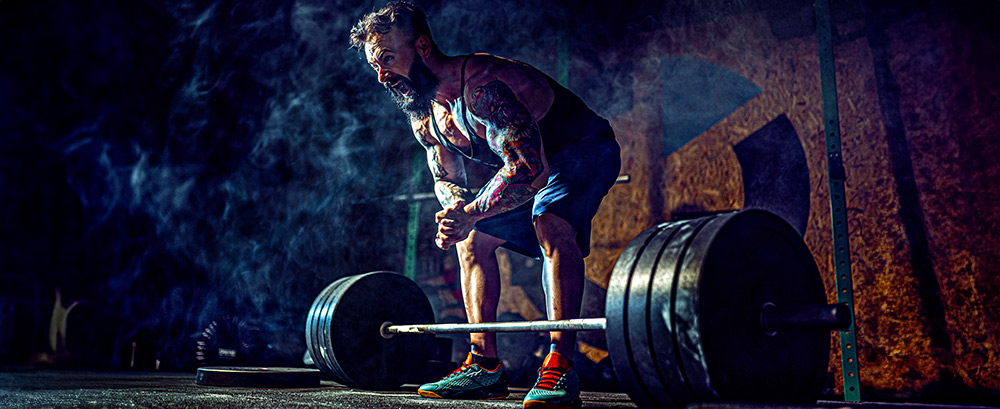If taken to failure, as slow twitch motor units fatigue and fail, higher motor units will kick in and fast twitch muscles will be recruited. This is as per Hennemans size principle: with lower intensity the body will at first only recruit smaller motor units/slow twitch fibers (the minimum needed to get the job done), but if the load is sufficient to cause those units to fail, higher motor units will kick in and fast twitch fibers will be recruited.
The Size Principle
Performing a light to moderate load to failure does recruit the Fast Twitch Muscle Fiber. It is effective for Bodybuilding and Endurance Training.
However, is it is counter productive in the development of Maximum Strength, Power and Speed Athletes, as I am sure you are aware of.
Research and anecdotal data have demonstrated that Bodybuilder who exclusive employ only Hypertrophy Training increase muscle mass at the expense of Maximum Strength, Power and Speed.
...you can structure high rep sets to stimulate fast twitch fibers and potentially improve power/speed capabilities,
but as usual the devil is in the details.
Cluster Set Training
The key to maintaining and developing Power and Maximum Strength is Cluster Set Training.
For those unfamiliar with it, it employs performing sets of repetitions within a set of repetitions with short rest periods.
As an example, let's say 3 repetition are performed in a set, followed by a 15 second to 60 second rest period. That circuit is completed, let's say 5 times. That means you have performed 15 repetition in 1 Cluster Set.
You then rest 3 minutes or longer and perform the same Custer Set above.
You perform this Custer Set sequence let's say 5 times.
That means the total number of repetition performed in that exercise is 75 Repetitions.
"Every Minute On The Minute Training" is good example of Cluster Set Training.
S
hort Rest Period Between Cluster
These short rest period between each set of clusters allows Fast Twitch Muscle Fiber to recover; brings them back to live.
Engaging Fast Twitch Muscle Fiber
For Fast Twitch Muscle Fiber to be engaged and developed requires the movement needs to be performed via...
"Compensatory Acceleration", Dr Fred Hatfield
The weight in the movement needs to be performed explosively; pushing/pulling it as hard and fast as you can.
With heavy load "The Intent" needs to be to explode up with the weight; even though that isn't going to occur.
Dr Jonathan Oliver's Custer Set Hypertrophy Training Protocol
This is some Cluster Set High Repetition Hypertrophy Training research by Oliver.
As research demonstrates, Hypertrophy Training alone is counter productive for Maximum Strength, Power and Speed.
Oliver found that Cluster Set Training ensured athletes were able to increase muscle mass while maintaining and developing Power and Maximum Strength.
While Traditional Hypertrophy Training was more effective, Cluster Set Hypertrophy Training came in a close second; while ensuring substantially greater development of the Fast Twitch Muscle Fiber.
With that said, the Traditional Higher Repetition Hypertrophy Training can enhance Power and Maximum Strength in a...
Conjugate Training Program
1) The Westside Powerlifting Training Method: This method involves Hypertrophy, Power and Maximum Training. It been around for close to 40 years.
2) Dr Michael Zourdos: Zourdos backs up the Westside Method. Zourdos found that 1 Repetition Maxes increased when Hypertrophy, Power and Maximum Training were employed in the same Training Cycle.
3) Dr Brad Schoenfeld: Schoenfeld's research determined that Hypertrophy was most effective achieved when the following were incorporated.
1) Mechanical Tension: Maximum Strength Training
2) Metabolic Stress: Hypertrophy Training; The Pump.
3) Muscle Damage: Essentially pushing the exercise to failure or near failure; Overreaching, a mild form of Overtraining.
Summary
1) High Non-Stop Repetition training as a stand alone program decreases Maximum Strength, Power and Speed.
2) A Conjugate Program that includes Maximum Strength and Power Training in conjunction with Higher Repetition Hypertrophy Training can be effective if the Training Program is well written and performed.
3) Cluster Set Training allows higher repetition to be performed, ensuring greater development of the Fast Twitch Muscle Fiber.



